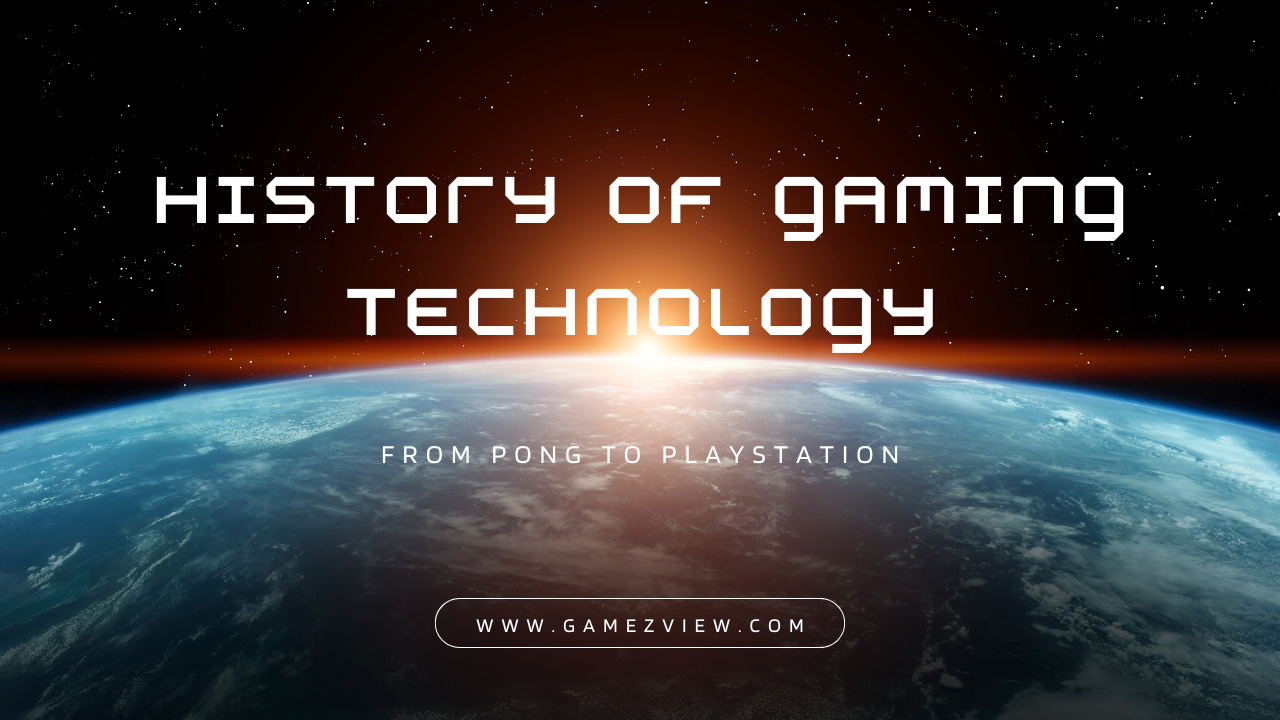The history of gaming technology is a captivating tale of innovation, creativity, and technological advancement that spans several decades. From the humble beginnings of arcade machines to the sleek consoles and immersive experiences of today, the evolution of gaming technology has left an indelible mark on popular culture and entertainment. In this illuminating exploration, we trace the origins of gaming technology and chronicle its transformative journey through the annals of time.
The Birth of Arcade Gaming
The roots of gaming technology can be traced back to the early 1970s, with the advent of arcade gaming and the release of iconic titles such as “Pong” and “Space Invaders.” These simple yet addictive games captivated audiences worldwide, laying the foundation for the burgeoning video game industry. Arcade machines became social hubs where players gathered to test their skills and compete for high scores, igniting a cultural phenomenon that would shape the future of gaming.
The Rise of Home Consoles
As technology advanced, so too did the accessibility of gaming experiences. In 1977, the release of the Atari 2600 marked a watershed moment in gaming history, bringing arcade-quality games into the living rooms of millions of households. The success of the Atari 2600 paved the way for a new era of home consoles, with competitors such as Nintendo, Sega, and Sony vying for dominance in the burgeoning market. Each new console brought with it groundbreaking innovations in graphics, sound, and gameplay, captivating audiences with immersive experiences and memorable franchises.
The Dawn of Personal Computing
While consoles dominated the gaming landscape, the rise of personal computing in the 1980s introduced a new paradigm for gaming experiences. Early home computers such as the Commodore 64 and the IBM PC enabled users to create and play games from the comfort of their own homes, fueling a wave of innovation in game development and design. Text-based adventures, graphic adventures, and early role-playing games (RPGs) became staples of the burgeoning PC gaming scene, laying the groundwork for the diverse array of genres and experiences that would follow.
The Advent of 3D Graphics and CD-ROMs
The 1990s witnessed a revolution in gaming technology with the advent of 3D graphics and CD-ROM technology. Games such as “Doom” and “Quake” pushed the boundaries of visual fidelity and immersive gameplay, leveraging cutting-edge graphics engines to create lifelike environments and visceral experiences. Meanwhile, the introduction of CD-ROMs as a storage medium allowed developers to create larger, more expansive games with full-motion video, voice acting, and orchestrated soundtracks, ushering in a new era of cinematic storytelling in gaming.
The Emergence of Online Gaming
With the widespread adoption of the internet in the late 1990s and early 2000s, online gaming emerged as a transformative force in the gaming industry. Multiplayer experiences such as “Counter-Strike,” “World of Warcraft,” and “EverQuest” allowed players to connect and compete with others from around the world, transcending geographical boundaries and fostering vibrant online communities. The rise of online gaming paved the way for new business models such as subscription services, microtransactions, and free-to-play games, reshaping the economics of the gaming industry.
The Convergence of Gaming and Mobile Technology
In the 21st century, the proliferation of mobile technology has democratized gaming, making it more accessible and ubiquitous than ever before. Smartphones and tablets have become powerful gaming platforms in their own right, offering a vast library of games ranging from casual puzzles to immersive multiplayer experiences. The rise of mobile gaming has blurred the lines between traditional gaming and other forms of entertainment, with millions of players worldwide engaging in gaming experiences on the go.
From the dimly lit arcades of the 1970s to the immersive virtual worlds of today, the history of gaming technology is a testament to human ingenuity, creativity, and the relentless pursuit of innovation. As we look back on the milestones and achievements that have shaped the gaming landscape, we are reminded of the profound impact that gaming technology has had on society, culture, and entertainment. As we stand on the cusp of a new era of gaming, one thing remains clear: the journey of gaming technology is far from over, and the best is yet to come.



